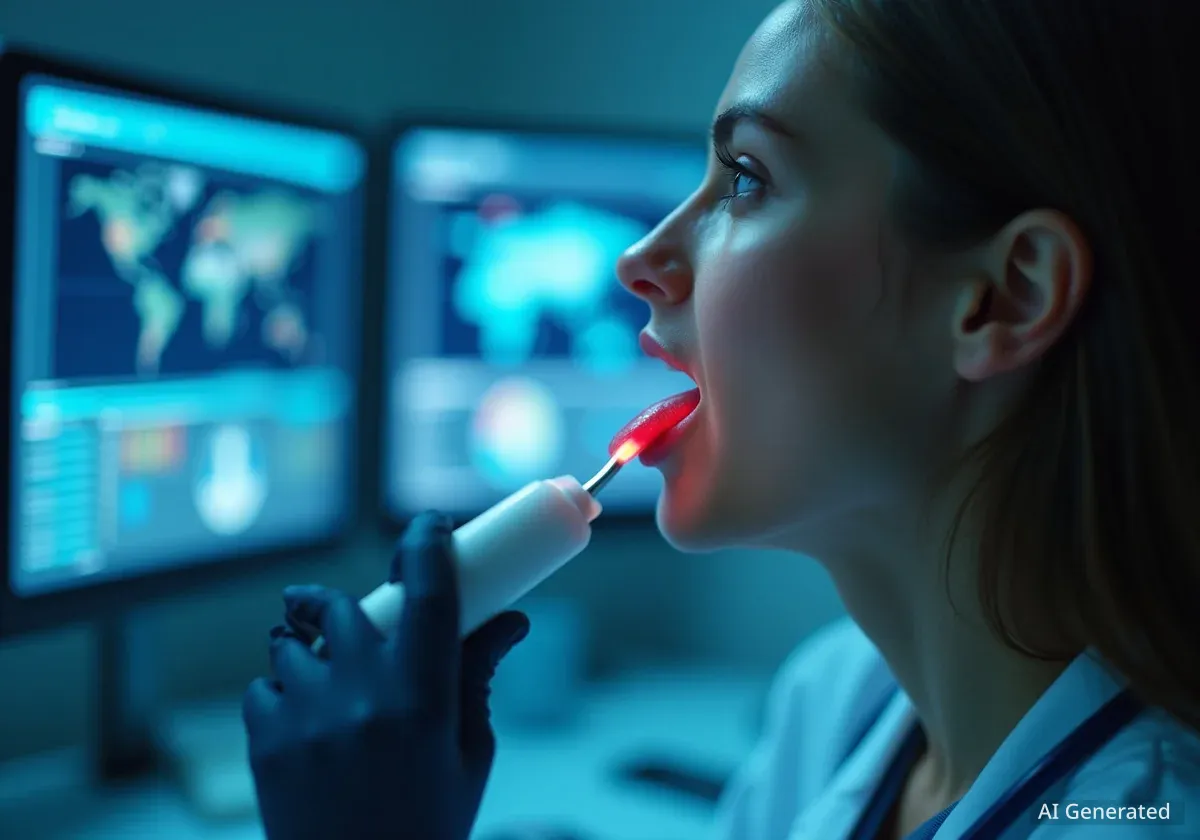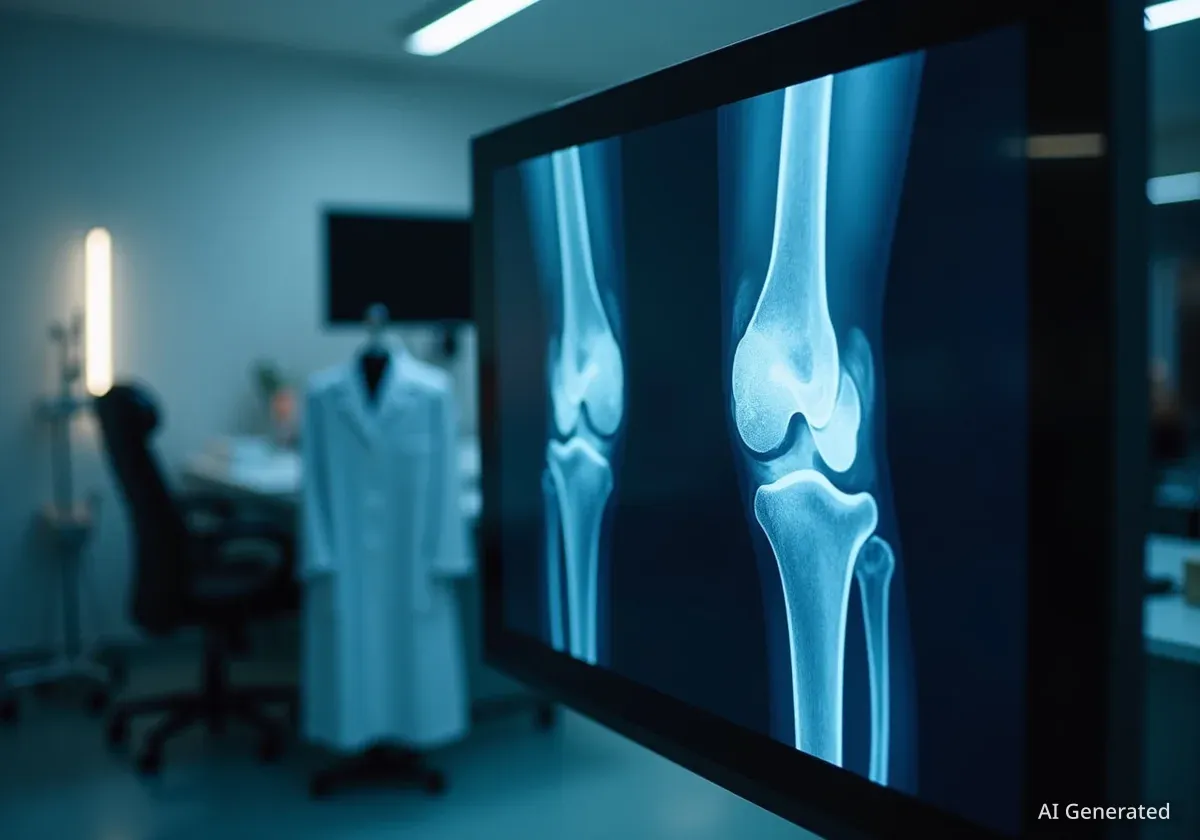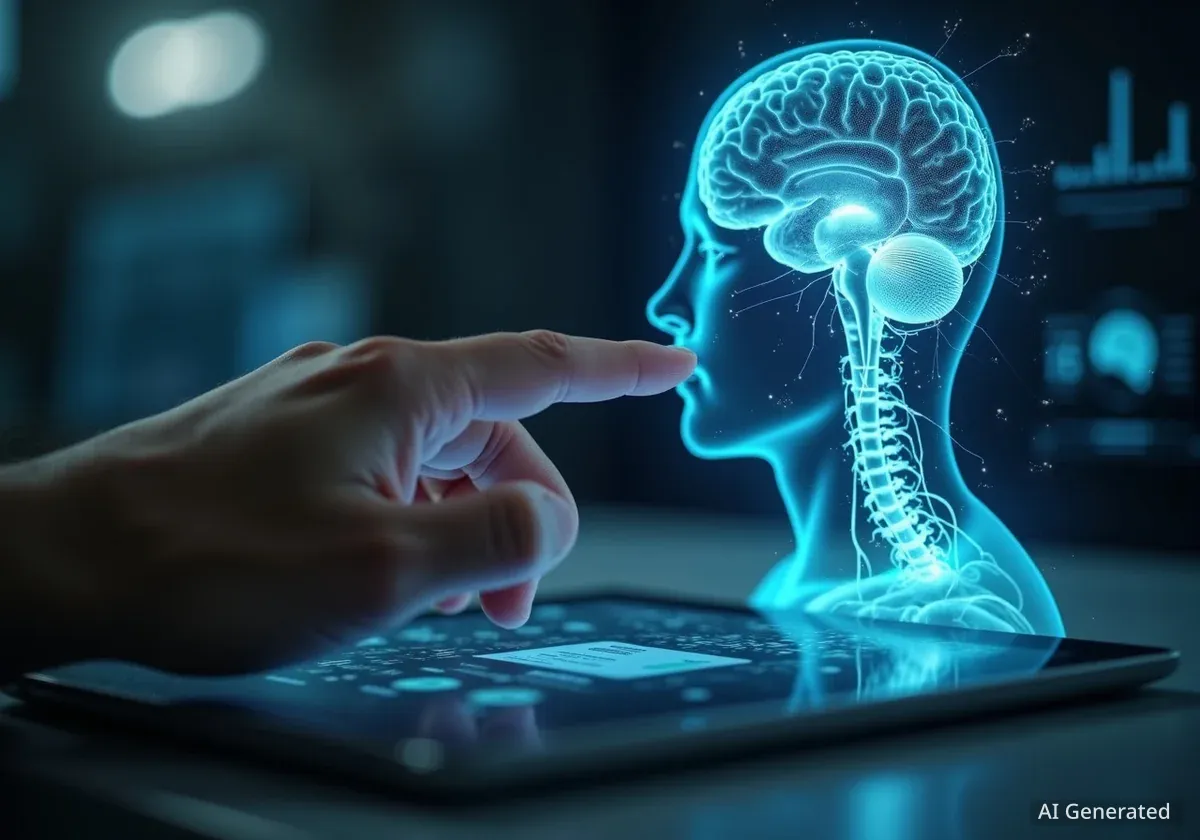Researchers have developed an artificial intelligence system that analyzes the color of a person's tongue to identify potential health conditions, achieving a high degree of accuracy in preliminary tests. This modern approach draws inspiration from traditional Chinese medicine, where tongue examination has been a diagnostic practice for thousands of years.
A recent study demonstrated that machine learning models could predict conditions like diabetes, anemia, and COVID with over 96 percent accuracy by evaluating digital images of tongues taken under controlled lighting.
Key Takeaways
- A new study used AI to analyze tongue images, predicting diseases with 96.6% accuracy.
- The system uses a special kiosk with standardized lighting to ensure consistent color analysis.
- Researchers linked specific tongue colors to conditions such as diabetes, anemia, and cancer.
- The technology is inspired by traditional Chinese medicine but faces challenges in data collection and standardization for widespread use.
Modernizing an Ancient Diagnostic Technique
For centuries, practitioners of traditional Chinese medicine (TCM) have inspected the tongue's color, shape, and coating as a key part of a patient examination. In TCM, the tongue is seen as a map of the body's internal health, with its appearance reflecting the state of a person's blood and vital energy, or "qi."
However, this method has historically been subjective, relying on the individual practitioner's perception and experience. Dong Xu, a researcher at the University of Missouri focused on computational biology, notes that tongue color is considered a primary health indicator in TCM. The challenge has always been translating this qualitative assessment into a standardized, evidence-based system.
While Western medicine does not have a comprehensive system for tongue analysis, specific features are recognized as important. According to Frank Scannapieco, an oral biologist at the University at Buffalo, defined lesions on the tongue can be indicators for certain cancers. Similarly, dentists and hygienists routinely screen for oral cancer by examining the tongue, though accuracy depends on their training.
Achieving High Accuracy with Controlled Imaging
A significant breakthrough came from a 2024 study published in the journal *Technologies*. The research team, co-led by Javaan Chahl of the University of South Australia, addressed the primary obstacle in digital tongue analysis: inconsistent lighting. "There have been studies where people tried to [diagnose via tongue color] without a controlled lighting environment, but the color is very subjective," Chahl explained.
To solve this, his team created a kiosk where patients place their head inside a box illuminated by LED lights. This setup provides a stable and controllable light source, ensuring that every image is captured under the exact same conditions, removing perception bias.
Training the AI Model
The researchers compiled a dataset of 5,260 images, including real tongue photographs and color-gradient images, to train their machine learning models. The AI was taught to recognize seven distinct colors—red, yellow, green, blue, gray, white, and pink—at various saturation levels.
The system was then tested on 60 new tongue images taken using the standardized kiosk at two hospitals in Iraq between 2022 and 2023. The AI's predictions were compared against the patients' official medical records. Study co-author Ali Al-Naji, a professor at the Middle Technical University in Iraq, reported that "the system correctly identified 58 out of 60 images," resulting in a 96.6% accuracy rate.
Correlations Between Tongue Color and Health
The study reaffirmed and quantified several color associations:
- Pink with thin white film: Generally indicates a healthy state.
- Whiter appearance: May suggest an iron deficiency or anemia.
- Bluish-yellow coating: Frequently observed in patients with diabetes.
- Purple with a thick layer: Could be an indicator for certain types of cancer.
- Varying shades of red: Linked to COVID-19 severity, from faint pink in mild cases to deep red in serious infections.
Challenges and Future Directions
Despite the promising results, several hurdles remain before AI-powered tongue analysis can become a mainstream diagnostic tool. One of the largest limitations is data collection. Scaling up the research requires gathering vast numbers of images from diverse populations, along with consent to access corresponding medical records.
"You need to have a lot of different people onboard with the process," Chahl stated, highlighting the logistical challenges of deploying kiosks in large hospitals.
Frank Scannapieco also pointed to the need for massive investment and extensive databases to standardize the approach. "Until then, I think the field will develop by accretion of small studies that reveal correlations between tongue appearance and specific conditions," he said. He also emphasized that many diseases do not manifest any change in the tongue's appearance, meaning this tool would be just one of many used for a comprehensive diagnosis.
From Wellness Tool to Diagnostic System
The concept is already reaching consumers in a different form. Dong Xu and his team at the University of Missouri launched a GPT-based AI application called BenCao. Users can upload a tongue image and receive personalized wellness advice based on TCM principles. However, it is marketed strictly as a wellness tool, not a medical diagnostic system. "We provide only some food and lifestyle recommendations," said Ph.D. student Jiacheng Xie. The team hopes to collaborate with physicians to validate their model against diagnoses from human doctors.
The Path to Clinical Integration
For AI tongue analysis to be integrated into mainstream healthcare, researchers must overcome issues of standardization and reproducibility. Dong Xu cautioned that image labeling is not widely standardized for these experiments, making it difficult for other scientists to replicate findings.
Furthermore, experts agree that tongue color alone is not sufficient for making a clinical decision. "The most fundamental limitation of current tongue-imaging systems is that tongue analysis represents only one component of a complete TCM diagnosis," Xu explained. It is intended to be a supplementary data point, not a replacement for a full medical evaluation.
Ali Al-Naji's team is already working on refining the technology. Their next steps include focusing the analysis on specific parts of the tongue, such as the center and tip, and using other deep-learning algorithms to examine features like shape, ulcers, and cracks. The long-term vision is to analyze more than just the tongue, potentially incorporating the entire face for a more holistic health assessment.





